 Adriana Modersitzki
Adriana Modersitzki
Are you itching to make your next career change?
Wanting to switch things up and head in a different direction but you’re not quite sure where to begin?
If that describes your current job situation, you’re not alone. I’ve been hearing it a lot lately from different clients.
Here’s the common theme… they don’t see themselves working where they are until they hit retirement (whether that’s decades or just a few short years away). They want something more long-term that fits with their lifestyle, career and financial goals. It’s time to move on… but to where?
You’ve done the first step, which is identifying a need for a career change, but what happens next? You have to decide on what you want to do and how to get there. In my experience, this is where the overwhelm and self-doubt start to creep in… with questions like:
The answers are: yes, no, no. You don’t have to stick it out and keep working a job you don’t love. You are more than able to achieve what you want and make a change in your career. All you need is a little bit of direction (and self-reflection).
I thought I’d give you some of my most practical tips to walk you through each step, so that you can make sure your next move is absolutely life-changing (in the best possible way).
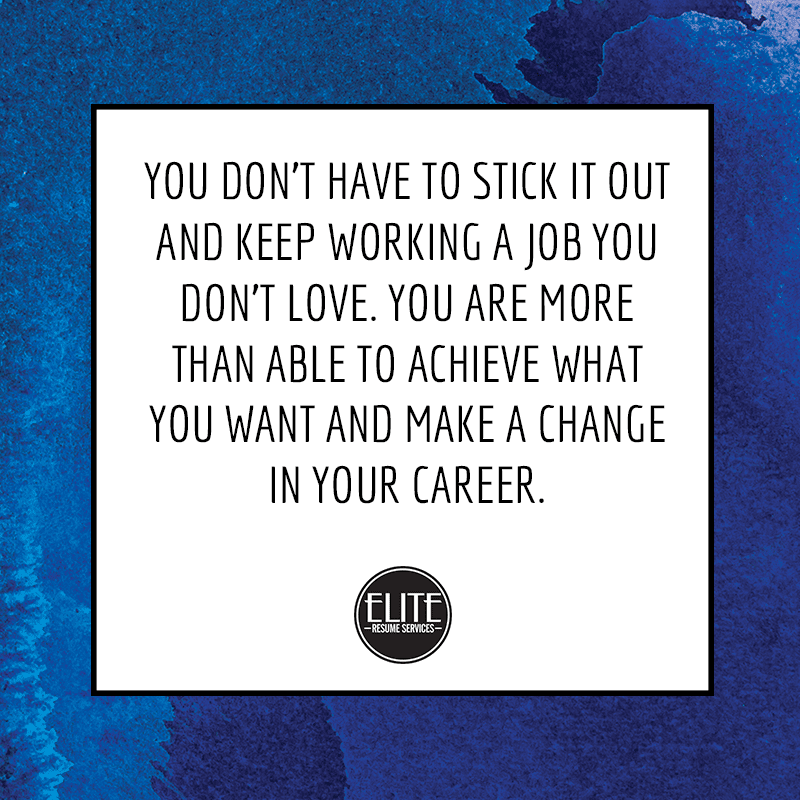
Get out your notepad and pen (or preferred note taking device) because you’re going to want to write this down as you go along – it will help your brain make connections and go through the process so that by the end of it, you’ll be all set to go
It might sound super simple and obvious, but it’s worth spending a little time thinking about your recent experiences and top preferences in a job. Ask yourself questions like:
Write it all down in your notepad. If you like, put the good stuff in one column, and the bad stuff in the other.
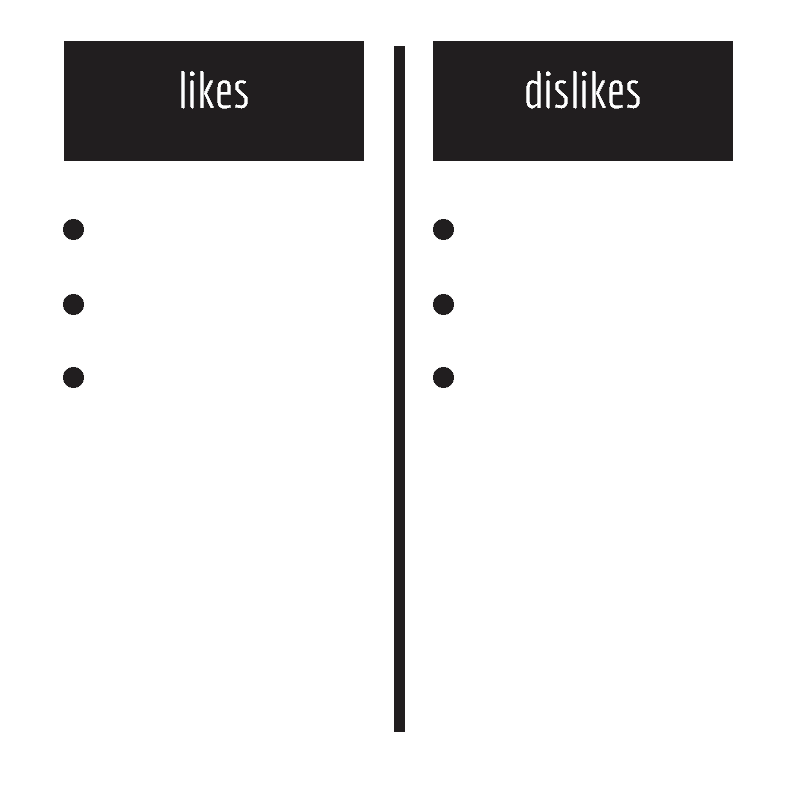
Let’s keep that healthy self-reflection going by looking at the kinds of environments where you can do your best work. It might seem a bit boring/airy-fairy in the moment, but trust me, taking the time to properly reflect on yourself is absolutely key to getting this process right.
To make it easier for you, I’ve listed a bunch of factors below that you can print off. This list isn’t definitive! Add your own if you like. Work your way through the list and if they apply to you, put a tick in the box. There are no right and wrong answers as we are all unique individuals with different abilities and strengths. Once you work through these, you can use them as inspiration to add your own at the end. Go as deep and detailed as you like. This will help lay the groundwork for the next steps.
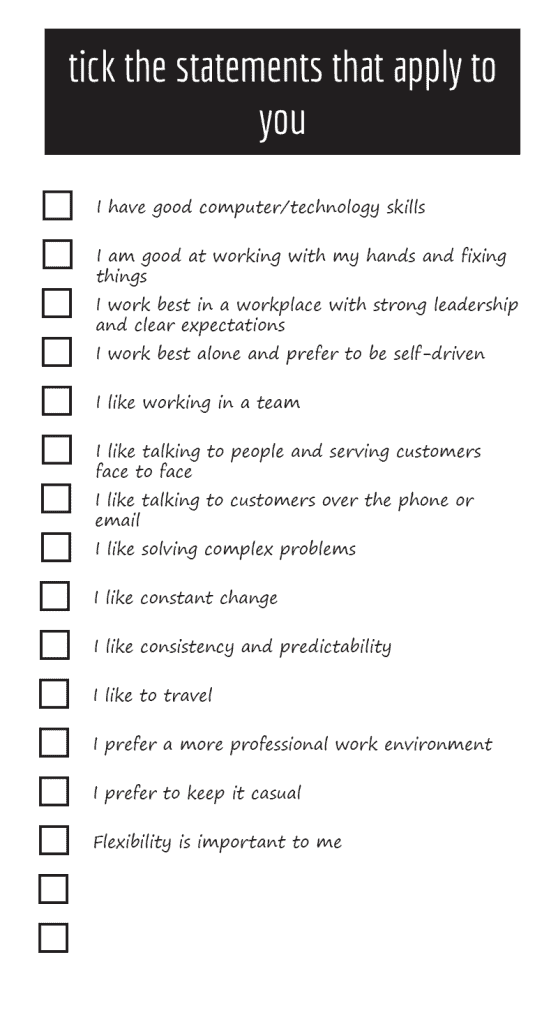
The next thing to do is picture your ideal workday. When you get up in the morning, where are you going? Or are you heading to work in the afternoon/evening instead? Who are you working alongside? What kind of clothes, shoes, and head-gear are you wearing?
You might be surprised at the image that comes to mind, or it might be not too far off your current type of work, but either way, this exercise is invaluable as it lets your subconscious take over and give you some hints as to the type of job you’d do well in.
Thinking about these different factors also helps you to hone in on the values that are important to you. For example, you might realise that weekend work isn’t do-able because you want to save those days for family time. Or perhaps you’d be okay with weekend work, as long as it meant greater flexibility during the week.
Whatever comes up, write it all down. If it helps, you can use the printable infographic below to record the kind of work day you visualise for yourself.
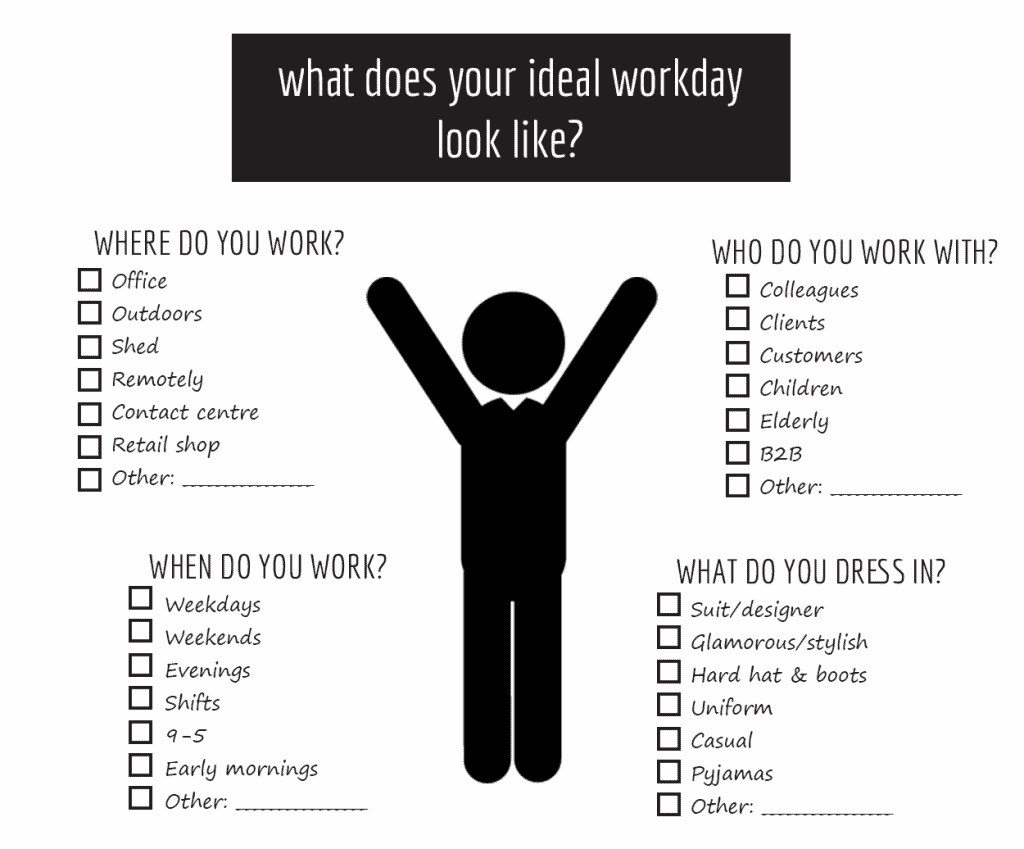
Once you have your ideal workday visualised, you can work backwards to find jobs that fit. Follow these steps:
Note that you’re not usually going to apply for a job at this point – you’re just doing your research so that you can map out a logical path to get you to that position in the future. Unless your skills and experience are already the perfect fit, it might be months or years until you are ready to apply. The point of this exercise is to come up with a plan.
Finally, you should go a bit deeper into your research to confirm whether this job is going to be right for you (before you start working towards it).
Find someone you know who actually works in the job you are considering, or at least in a similar field. Go and pick their brain as soon as you can and ask them as many questions as you can think of. I’ve included some suggestions below.
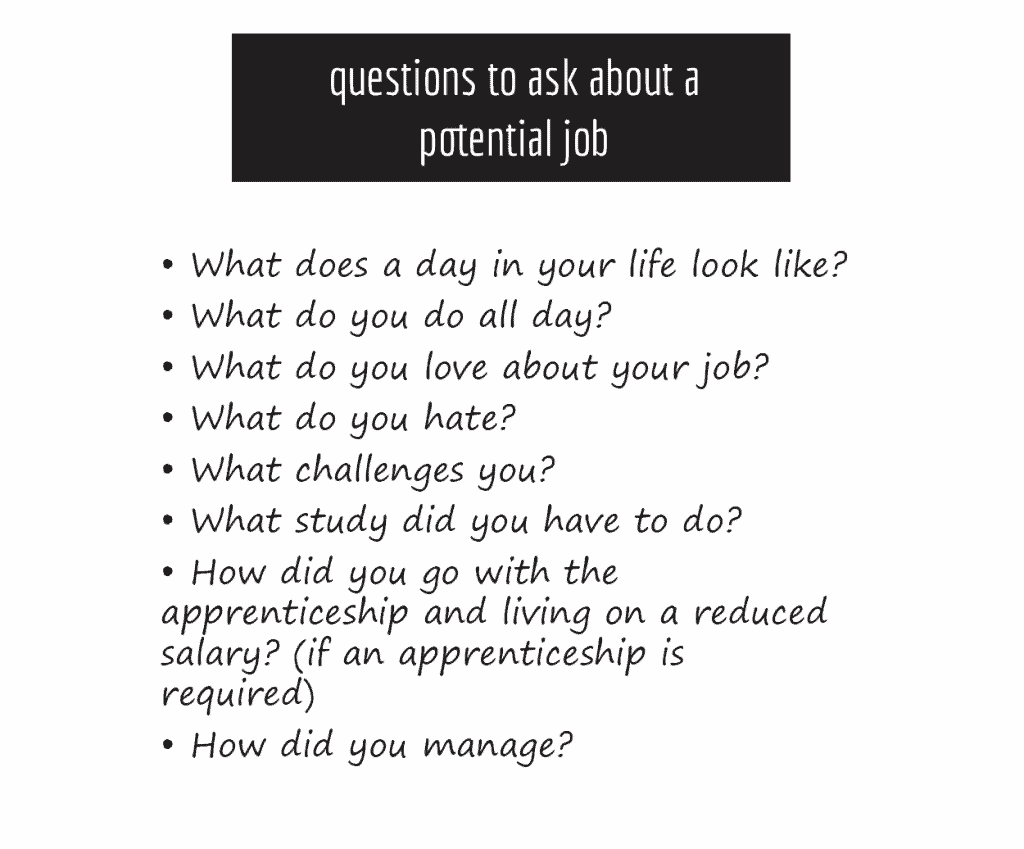
The insights you get from this process and talking to someone who’s actually doing the job will help you know what it’s really like. The last thing I’d want is for you to waste your precious time (and money) chasing a job that isn’t going to work for you. As an added bonus, while you’re asking around, you might even make some valuable industry connections.
Once you get to the end of this step, it should be extremely clear whether you’re ready to start making changes to the direction of your career.
You’ll either be…
If you didn’t nail it first time, you can go back and repeat steps 4 & 5 of this process over again until you land on a job/career that works for you. If you experience a major life change (like having kids) that shifts your priorities, it might also be worth revisiting steps 1-3 to reaffirm the qualities of your ideal workplace.
Want to discuss your next career change further? Get in touch today and we can work through it together.
We respectfully acknowledge the traditional custodians of the land upon which we live and work, the Ngunnawal people.
We acknowledge and respect their continuing culture and the contribution they make to the life of this city and this region, and extend that same respect to all Aboriginal and Torres Strait Islander people.
4 comments